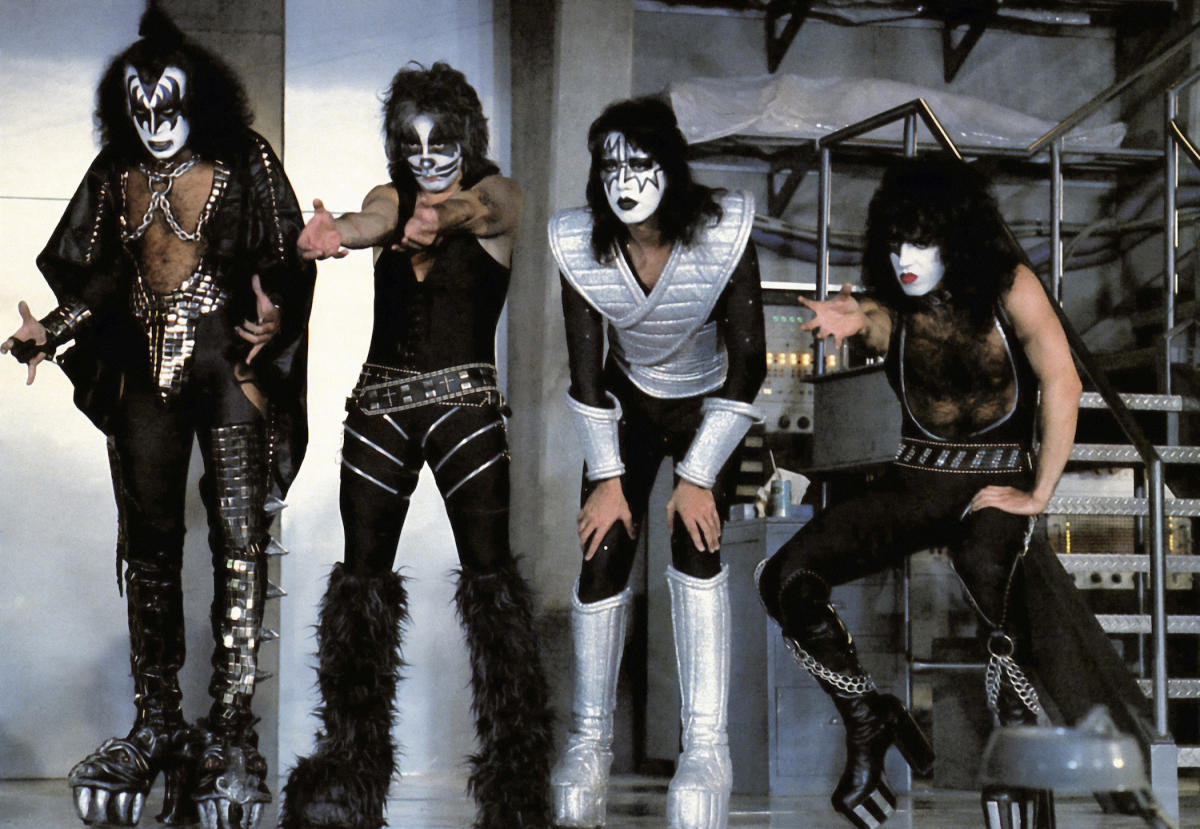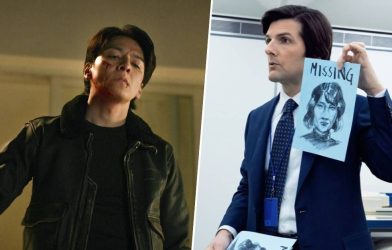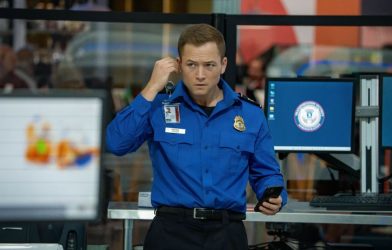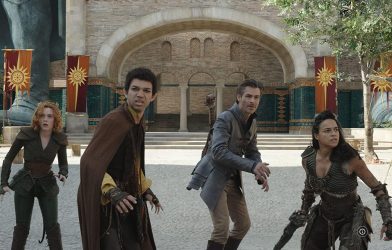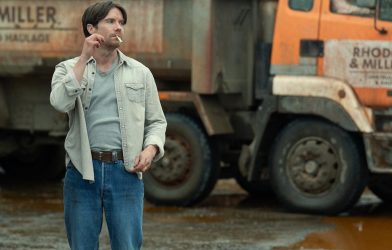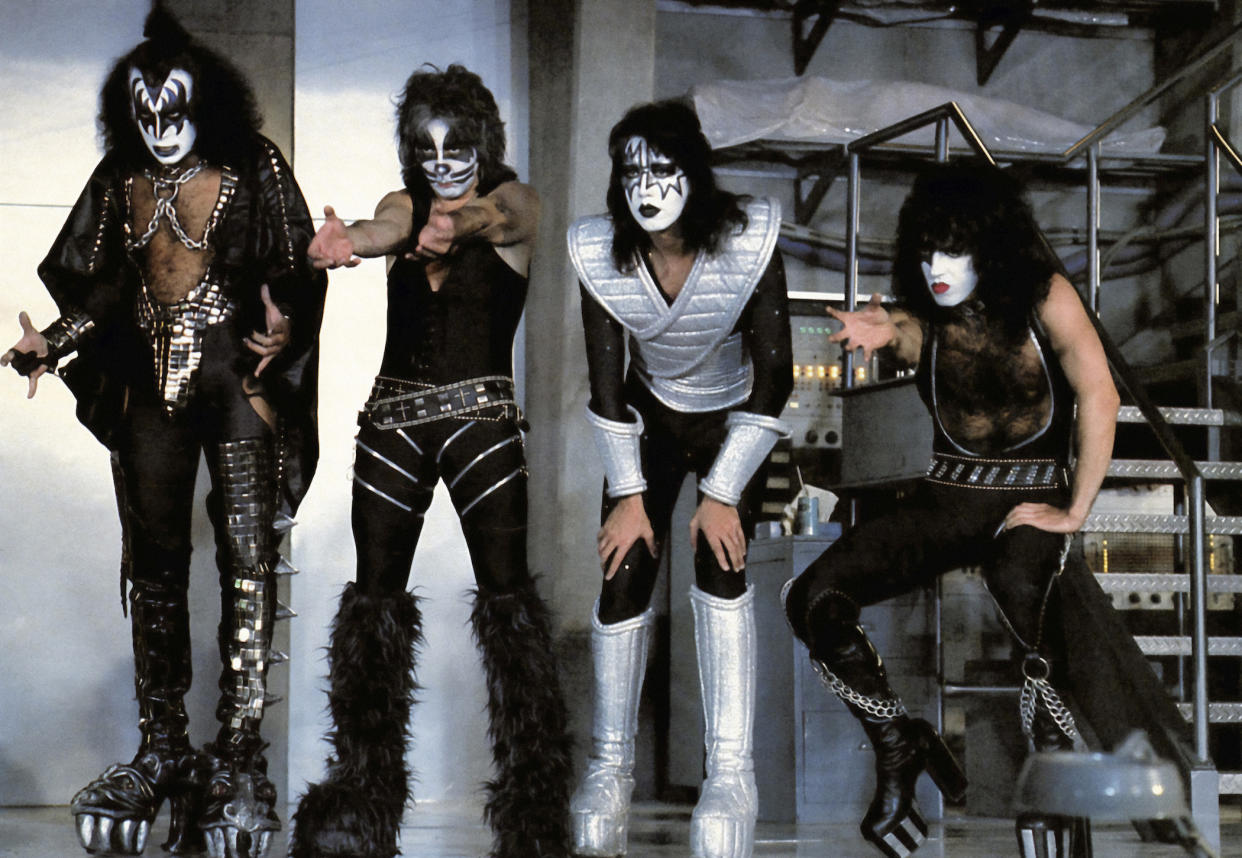


In the new movie Destroy All Neighbors, a mild-mannered prog-rock musician named William (Jonah Ray Rodrigues of Mystery Science Theatre 3000) kills and dismembers his annoying neighbor Vlad (Alex Winters of the Bill & Ted franchise). Murder usually throws a wrench into anyone’s creative process, but all that carnage helps William finally finish his ambitious prog-rock opera. In fact, sitting in on drums for the sessions is Vlad’s limbless torso, which holds the sticks and operates the kick drum with his intestines.
More from Spin:
It’s a weird-ass movie, although occasionally a little too satisfied with its own transgressions, but perhaps the weirdest and most unexpected aspect of the film is its heartfelt defense of prog, that most-despised of musical genres. “Prog is like life,” William tells the bloody head of Vlad. “It’s complex, it’s overwhelming and confusing, always changing.”
Destroy All Neighbors is a grisly, gnarly addition to the canon of Weird-Ass Music Films. For all the amazing films about music—from The Last Waltz to The Velvet Goldmine, from Spinal Tap to Tár, from Whisper & Shout to 20 Feet from Stardom—there is a shadowy cabal of cult movies that are just too strange to break through to the mainstream. Some are failed attempts to sum up the appeal of an artist or the philosophy of a scene. Others are outrageous expressions of pop liberation whose “more is more” approach overwhelms their subject matter. Others are The Apple. And there is a difference between weird music movies and weird-ass music movies, the latter having the courage of its convictions to be exactly the thing it needs to be.
Is Destroy All Neighbors one for the ages? Maybe. It does demonstrate an acute understanding of the creative process and all the many obstacles artists place in their own paths. And the gore is creative. Most of all it shows that the weird-ass music subgenre is still alive and kicking—and maybe keeping time with various organs. Herewith are 11 weird-ass classics.
Phantom of the Paradise (1974)
Before he settled into a career of Hitchcock worship, Brian De Palma made one of the most ridiculous rock operas ever committed to tape, a trippy retelling of Gaston Leroux’s Phantom of the Opera set at the kind of hip discotheque that exists only in films. Paul Williams, who wrote songs for the Carpenters and the Muppets, did the music and plays the corrupt pop mogul who owns The Paradise. He steals a cache of hit songs from a struggling songwriter, then steals his teeth. To his credit, De Palma shoots the whole thing with the straightest of faces, even using his not-yet-tired split-screen technique to show how the Phantom pulls off the onstage murder of a Meat Loaf-ish star named Beef. Bonus points to Jessica Harper, who did pliés in Suspiria but does the hustle in Phantom.
Lisztomania (1975)
Ken Russell was the master of the music biopic. Although he only made a few of them during the 1970s, he exploded the rags-to-riches narrative arc that had already settled into the genre, using the music of each subject to determine the story, tone, and style of films like The Music Lovers (Peter Ilyich Tchaikovsky) and Mahler (Gustav Mahler). Even in his bold catalog, however, Lisztomania stands out if only for the incredible number of dicks. There are dicks everywhere, in nearly every scene, even on the film poster. At one point, Roger Daltrey—playing Franz Liszt, the first rock star—sports a ten-foot erection. Liszt inspired the term lisztomania, which refers to the frenzied and unreasonable hysteria that accompanies intense fandom. The crowd scenes are legitimately unnerving, but fortunately, lisztomania has no contemporary relevance whatsoever anymore, no siree.
Kiss Meets the Phantom of the Park (1978)
What is it about Leroux’s novel that inspires so many rock remakes? Instead of discotheque, this made-for-TV movie sets the action at an amusement park, where Kiss is headlining and stealing attention away from the animatronics designed by the evil scientist Abner Devereaux. Playing an amusement park was certainly a step down from the arenas Kiss was filling in the ‘70s, but this flick did air the same year the members all released solo albums—a disastrous undertaking that nearly derailed their career. The opening credits are legitimately inventive, maybe the best part of the film, although in the climax each Kiss member fights his own evil clone (which is a fine allegory for those solo albums). Did I mention they have magic powers and stay in makeup the whole time? Did I tell you that Gene Simmons growls like a tiger? The whole thing sounds like it was dreamed up by a squad of 13-year-old boys after a case of Cokes.
Stunt Rock (1978)
You know what rocks? Stunts. You know what else rocks? Rock. Put stunts and rock together in the same movie, and you’ve got Stunt Rock. This Aussie oddity, directed by Brian Trenchard-Smith (Turkey Shoot, BMX Bandits) tells a very loose story of a stuntman from the Southern Hemisphere who moves to Hollywood, and he does dangerous stunts along the way. Interspersed amid the action are performances by a very theatrical metal band called Sorcery, whose stage show makes the dream sequences in The Song Remain the Same look like On Golden Pond. (A decade later, they recorded the Rocktober Blood soundtrack) The whole thing is ridiculous in the best way possible, and there’s an undeniable thrill to watching a man get shot out of a cannon while a wizard grooves to some power chords.
Nocturna: Granddaughter of Dracula (1979)
Having fallen on hard times—his fangs are actually dentures!—Count Dracula is forced to turn his castle into a touristy Transylvanian hotel, which is run by his granddaughter. She books a disco group called Moment of Truth, falls in love with their guitarist, and follows him back to New York, where she falls in with a vampire neighborhood alliance that meets in a crypt under the Brooklyn Bridge. That old story. Nocturna is a vanity project co-written by, co-produced by, and starring dancer-turned-actress Nai Bonet, who is a fine dancer but not much of an actress. She spends a good deal of the film either nude in the bath or wandering around ‘70s Manhattan in a flowing red gown, dodging massive piles of garbage and talking up random passersby (who didn’t realize they were being filmed). Reportedly, nearly a third of the film’s budget went to the music, and the soundtrack features Gloria Gaynor and Vicki Sue Robinson sounding like they’re one verse away from firing their managers.
The Apple (1980)
The Apple is the Mount Olympus of Weird-Ass Music Movies. It’s where the gods dwell. This 1980 musical is set in the distant future of 1994, when record labels have taken over the government and define nearly every aspect of life. It’s also a weirdly prescient take on the rockist/poptimist debate, which has defined pop criticism for the last decade and change. The Apple wants so badly to be rockist: The heroes, Alphie and Bibi (or, you know, Adam and Eve), start out making music with just their voices and guitar, as though earnest folk music is the highest form of expression. The lowest form is the shiny, slick dance music force-fed to the populace of this discotopia. But the film takes such care to stage those big numbers, which end up being so much more fun than the “good” folk numbers that you’re actually relieved when all the hippies get raptured in God’s own pimpmobile. At least then everybody else can get back to their government-mandated dance breaks!
Starstruck (1982)
An early example of the jukebox musical, Starstruck uses songs by popular-in-Australia acts to tell the story of a young singer struggling to find stardom without losing her essential spark. The story itself is familiar, but director Gillian Armstrong instills it with jittery whimsy and lead Jo Kennedy projects a skewed, guileless charisma. Both of them bring you into the world of the film, so that you feel like you’re an active participant in the eccentric dance numbers and in the audience during the climax at the Sydney Opera House. Starstruck ought to be a midnight staple, with full Rocky Horror-style sing- and dance-alongs, because who wouldn’t want to live in this charmingly weird version of Sydney, where somebody is always breaking into song and there’s always a good chance that song was written by Tim Finn?
The Legendary Stardust Brothers (1985)
This Japanese flick has roughly the same plot as Starstruck, except, instead of a lowly barmaid finding pop success, it’s two rival lead singers who turned out to be long-lost brothers and who are assassinated in the very first scene. In adapting an album by the pop star Haruo Chikada, first-time director Makoto Tezuka infuses every scene with dizzying, disorienting energy and explodes every plot point about young artists resisting the temptations of the music industry. The songs are actually catchy as hell, the performances betray no wink or nudge of camp, and the pacing is so frenzied and manic that it doesn’t matter if nothing really makes much sense.
Rock ‘n’ Roll Nightmare (1987)
All Jon Mikl Thor ever wanted to do was work out and rock out. In the ‘70s he combined those two pursuits into an unusual stage show. Heavy guitar riffs provided a soundtrack to the Canadian star bending steel rods and ripping phone books in half. In the ‘80s Thor jumped to the big screen with a pair of starring roles in metal-themed horror flicks. Zombie Nightmare got the MST3K treatment, but Rock ‘n’ Roll Nightmare is his finest moment, a bit of heroic myth-making the guise of a slasher film. An unnamed band rent a house somewhere in Canada, where they will write and record their new album. One by one they start disappearing. Are they being offed by all those penis-looking puppets, or is there something more nefarious lurking in the basement of their Airbnb? Imagine a chef’s kiss emoji as tall as the Burj Khalifa, and that’s the third-act plot twist.
Vibrations (1996)
It’s hard to talk about this straight-to-video masterpiece without giving too much away. There’s a first-act reveal that’s so dumb and a second-act reveal that’s so ridiculous that it’d be a shame to ruin them. (A high-quality version is streaming on YouTube, so no excuse.) But I can tell you: This singular film is set in the world of the techno raves that all the Gen X slackers were attending back in the ‘90s, although there’s a strong chance nobody associated with this film had ever actually been to a rave or listened to techno. It’s like The Best Years of Our Lives crossed with Reality Bites, yet somehow better, thanks to a committed performance by James Marshall (from Twin Peaks) and a script that studiously avoids anything resembling a human interaction. As Christina Applegate’s neo-hippie Anamika explains, “Utopia’s just around the corner.”
To see our running list of the top 100 greatest rock stars of all time, click here.

